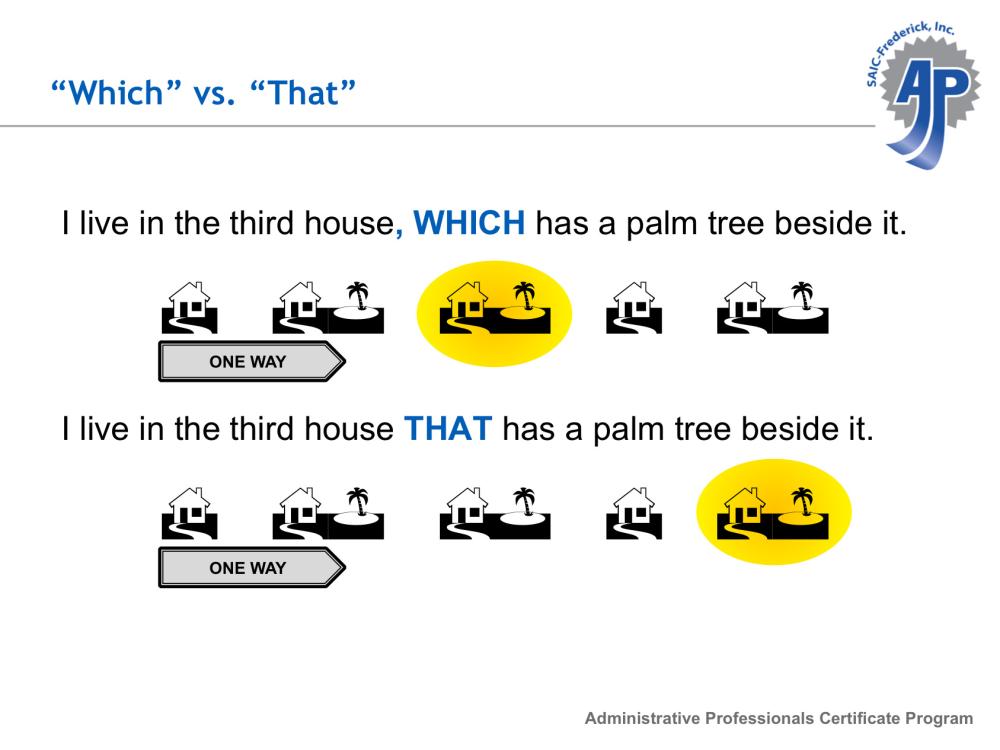By Ken Michaels, Staff Writer
This article is about a few “odds and ends” that may contribute to more precise oral and written communication.
More on Abbreviations
A couple of questions have come my way since we published the article entitled “It’s Eff En Ell” (http://ncifrederick.cancer.gov/about/theposter/content/its-eff-en-ell). The first has to do with making abbreviations plural. The rule is to express the abbreviation in all capitals followed by a lowercase s—with no spaces and no apostrophe: “I saw three UFOs yesterday.”
Although it’s an all-too-common mistake to use an apostrophe to create a plural form, it is a mistake nevertheless. An apostrophe is used to indicate possession or an attribute, not to indicate a plural. Our CEO’s preferred form of transportation is correctly referred to as Dave Heimbrook’s motorcycle (because it belongs to him). But if you have a conversation with Heimbrook and Dave Bufter, you might say that you spoke with “the Daves,” because there are two of them. Similarly, in the case of the three UFOs, you might also refer to estimating “a UFO’s velocity,” because it’s an attribute.
The other question has to do with the article that precedes an abbreviation: do I use “a” or “an?” The rule is that it depends on how the abbreviation is pronounced, not how it is spelled. NIH, for example, begins with the letter n, but it’s a soft n; we say “enn eye aitch.” Since it’s a soft n, the proper article is an. “An NIH institute” is correct. NORAD also begins with the letter n, but in this case it’s a hard n, because NORAD is pronounced as a word, hence “a NORAD installation.”
Which vs. That
In the Scientific Writing Workshop that Scientific Publications, Graphics & Media used to offer, my former colleague, Maritta Grau, devised a means of clarifying the proper use of these two words, which can be confusing. Consider the following graphic:
What we see here are five houses in a row, three of which have a palm tree in the yard. Consider these two statements:
“I live in the third house, which has a palm tree in the yard.”
“I live in the third house that has a palm tree in the yard.”
The two statements are directing your attention to two different houses. The first means you live in house number three, because it’s the third house on the street. But the second means you live in house number five, because it’s the third house that has a palm tree in the yard.
Notice the comma in the “which” statement. It indicates that what follows is nonessential to the meaning of the statement. In other words, “which” clauses are nonrestrictive, or nonessential to the meaning of the sentence. “That” clauses, on the other hand, are restrictive, or essential to the meaning of the sentence.
Other Odds and Ends
Fewer vs. less. Use less when referring to quantity and fewer when referring to a number. Examples: less time; fewer minutes.
Innumerable vs. numerous. These words are not synonymous. Innumerable means too many to count, whereas numerous means many. Example: The beach contains innumerable grains of sand, but the library has numerous books.
Fortuitous vs. fortunate. Fortuitous means accidental or happening by chance. Fortunate means lucky, indicating good fortune. If you bumped into an old friend on the street, that would be fortuitous. If you actually liked this old friend, it would be fortunate.
Criteria vs. criterion. Criterion is the singular form of criteria. Hence, use “these” or “those” with criteria, and “this” or “that” with criterion.
I encourage you to be conscientious about precise meaning when choosing words. Effective communication is an important goal; the more precise we are with our use of the language, the more likely it is that the goal of our writing will be achieved.
Note: The “odds and ends” word pairs are based on tips taken from back issues of Communication Briefings, published by Briefings Publishing Group, 300 N. Washington St., Ste. 605, Alexandria, Va.


